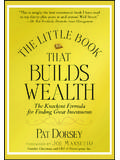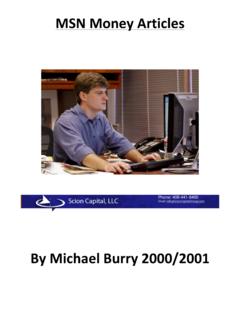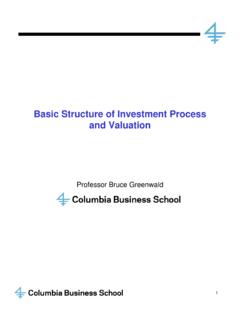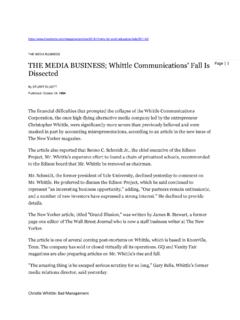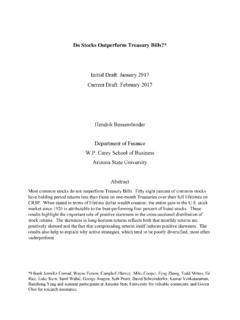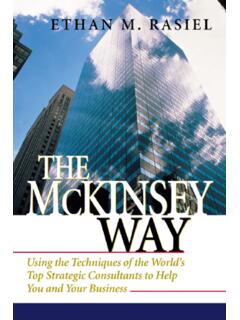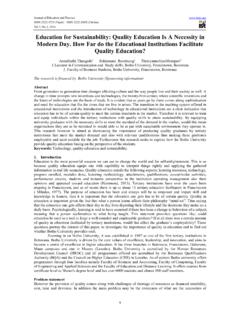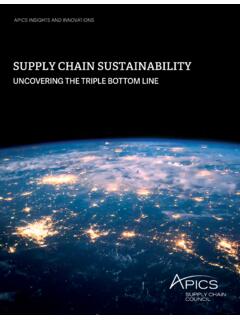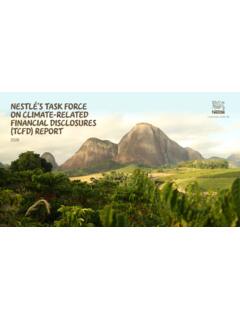Transcription of Measuring the Moat - csinvesting
1 FOR DISCLOSURES AND OTHER IMPORTANT INFORMATION, PLEASE REFER TO THE BACK OF THIS REPORT. July 22, 2013 GLOBAL FINANCIAL STRATEGIES Measuring the Moat Assessing the Magnitude and Sustainability of Value Creation Authors Michael J. Mauboussin Dan Callahan, CFA The most important thing to me is figuring out how big a moat there is around the business. What I love, of course, is a big castle and a big moat with piranhas and crocodiles. Warren E. Buffett Linda Grant, Striking Out at Wall Street, News & World Report, June 12, 1994 Sustainable value creation is of prime interest to investors who seek to anticipate expectations revisions.
2 This report develops a systematic framework to determine the size of a company s moat. We cover industry analysis, firm-specific analysis, and firm interaction. July 22, 2013 Measuring the Moat 2 Table of Contents Executive Summary .. 3 Introduction .. 4 Competitive 4 Economic Moats .. 7 What Dictates a Company s Destiny .. 8 Industry Analysis .. 10 Lay of the Land .. 11 Industry Map .. 11 Profit Pool .. 13 Industry Stability .. 15 Industry 17 Industry Structure .. 18 Five Forces.
3 18 Entry and Exit .. 19 Competitive Rivalry .. 25 Disruption and Disintegration .. 27 Firm Specific Analysis .. 32 A Framework for Added-Value Analysis .. 32 Value Chain .. 33 Sources of Added Value .. 34 Production Advantages .. 34 Consumer Advantages .. 38 Government .. 41 Firm Interaction Competition and Cooperation .. 42 Brands .. 46 Management Skill and Luck .. 48 Buffett on Moats .. 51 Appendix A: Value Creation Checklist .. 52 Appendix B: Profit Pool Analysis for Health Care .. 54 References.
4 63 July 22, 2013 Measuring the Moat 3 Executive Summary Sustainable value creation has two dimensions how much economic profit a company earns and how long it can earn excess returns. Both dimensions are of prime interest to investors and corporate executives. Sustainable value creation as the result solely of managerial skill is rare. Competitive forces drive returns toward the cost of capital. Investors should be careful about how much they pay for future value creation. Warren Buffett consistently emphasizes that he wants to buy businesses with prospects for sustainable value creation.
5 He suggests that buying a business is like buying a castle surrounded by a moat and that he wants the moat to be deep and wide to fend off all competition. Economic moats are almost never stable. Because of competition, they are getting a little bit wider or narrower every day. This report develops a systematic framework to determine the size of a company s moat. Companies and investors use competitive strategy analysis for two very different purposes. Companies try to generate returns above the cost of capital, while investors try to anticipate revisions in expectations for financial performance.
6 If a company s share price already captures its prospects for sustainable value creation, investors should expect to earn a risk-adjusted market return. Industry effects are the most important in the sustainability of high performance and a close second in the emergence of high performance. However, industry effects are much smaller than firm-specific factors for low performers. For companies that are below average, strategies and resources explain 90 percent or more of their returns. The industry is the correct place to start an analysis of sustainable value creation.
7 We recommend getting a lay of the land, which includes a grasp of the participants and how they interact, an analysis of profit pools, and an assessment of industry stability. We follow this with an analysis of the five forces and a discussion of the disruptive innovation framework. A clear understanding of how a company creates shareholder value is core to understanding sustainable value creation. We define three broad sources of added value: production advantages, consumer advantages, and external advantages. How firms interact plays an important role in shaping sustainable value creation.
8 We consider interaction through game theory as well as co-evolution. Brands do not confer competitive advantage in and of themselves. Customers hire them to do a specific job. Brands that do those jobs reliably and cost effectively thrive. Brands only add value if they increase customer willingness to pay or if they reduce the cost to provide the good or service. We provide a complete checklist of questions to guide the strategic analysis in Appendix A. July 22, 2013 Measuring the Moat 4 Introduction Corporate managers seek to allocate resources so as to generate attractive long-term returns on investment.
9 Investors search for stocks of companies that are mispriced relative to embedded financial expectations. In both cases, sustainable value creation is of prime interest. What exactly is sustainable value creation? We can think of it in two dimensions. First is the magnitude of returns in excess of the cost of capital that a company does, or will, generate. Magnitude considers not only the return on investment but also how much a company can invest at a rate above the cost of capital. Growth only creates value when a company generates returns on investment that exceed the cost of capital.
10 The second dimension of sustainable value creation is how long a company can earn returns in excess of the cost of capital. This concept is also known as fade rate, competitive advantage period (CAP), value growth duration, and Despite the unquestionable significance of the longevity dimension, researchers and investors give it insufficient attention. How does sustainable value creation differ from the more popular notion of sustainable competitive advantage? A company must have two characteristics to claim that it has a competitive advantage.


